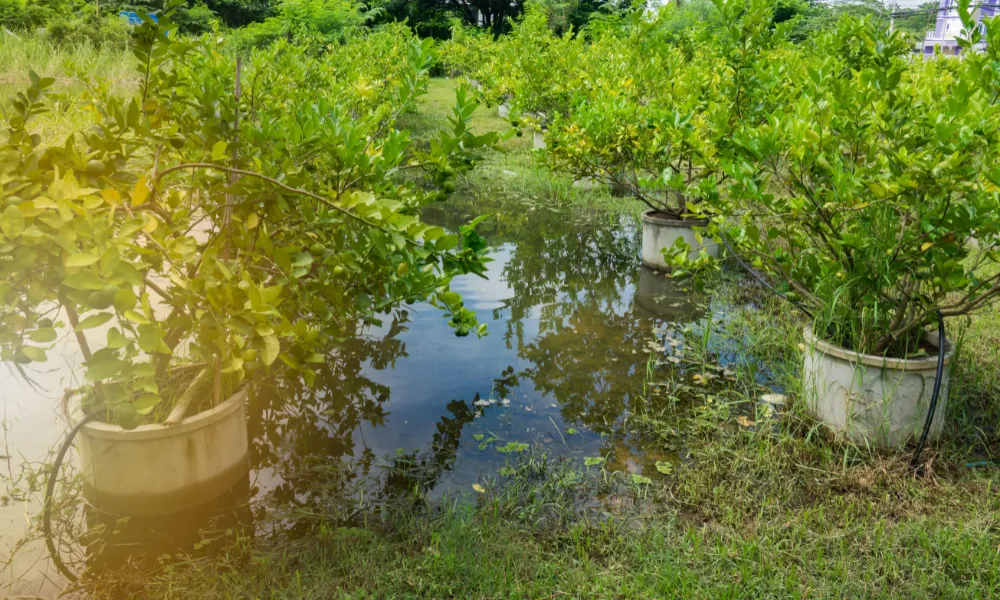
Soggy Gardens.
Excess water in the garden is an issue for most people in Ireland from Autumn through Winter (and the rest of the seasons quite often but lets be optimistic!) here I will be looking at the symptoms to recognise and the steps you can take to deal with and prevent it from happening.
Symptoms.
Signs of waterlogging are many, excess moss, browning leaf tips, patchy lawns, and diseased plants can be the first signs. Root rot is a particular issue as without air circulating around the roots they drown and the plant dies. Worms which are so important for the maintenance of healthy soil can't live under water so will quickly either die or vacate the area. Once this happens you will be left with compacted clay that nothing other than algae, moss and reeds will grow in.
Prevention.
There are a number of ways that you can prevent this from happening depending on the area that you are dealing with.
Border Beds.
Overly wet border beds are usually the result of poor preparation. When creating a border bed there should be a drainage system placed underneath, this usually consists of a perforated pipe run underneath about a foot and a half down covered with garden fabric and then a layer of gravel. Quite often this is not the case and waterlogging happens.
If digging up your border to place the drainage in isn't an option for you there are a few things that can help.
Mulching (bark). Bark mulch is great for absorbing excess moisture and biodegrades into the soil to leave nutrients for your plants. Just put a generous layer on top of the bed and let it get to work.
Mix in compost and sand or perlite. Overly wet soil compacts and becomes impermeable and so water ends up sitting on top and no nutrients or air can circulate. Mixing in compost and sand can help aerate the soil while re establishing nutrients.
Aeration. By taking a garden fork or a purpose made aeration tool and peppering the area with holes you can help the water seep through and drain away from your plant roots and also encourage worms back in.
Lawns.
As with border beds when the lawn was created drainage should have been in mind and a soakaway or trench should be in place however this again is quite often not the case. Sodden lawns can be a real problem as moss can take hold readily and reeds can quickly form in clumps.
A French trench is the best option for any seriously waterlogged lawn. As with the border bed drainage it is a perforated pipe placed in about 18 inches deep with some garden fabric wrapped loosely around, follow this with gravel and then cover with your soil. It should drain into a soakaway which is a box shaped pit with gravel in it and soil on top.
Aerating lawns right now is important as it's best done before the heavy rain comes and while the ground is still warm. You can do this with your garden fork but especially with lawns it is best done with an aeration tool as this will actually take plugs of soil out as you do it. In a crisscross fashion make the holes every food or so over the lawn. Once this is done rake some gardeners sand into the holes.
Once you have aerated and sanded, spread some extra grass seed over the area. It is perfect weather for it to grow and the extra roots will create a thicker barrier to prevent moss and reeds coming through.
Make sure none of your drains are blocked, fallen leaves can be a nuisance for blocking gutters and drains this time of year. Finally keeping a water butt is also a good idea as collecting the water and repurposing to water dryer areas is better than it running into any already flooded corners!
Sophie x








